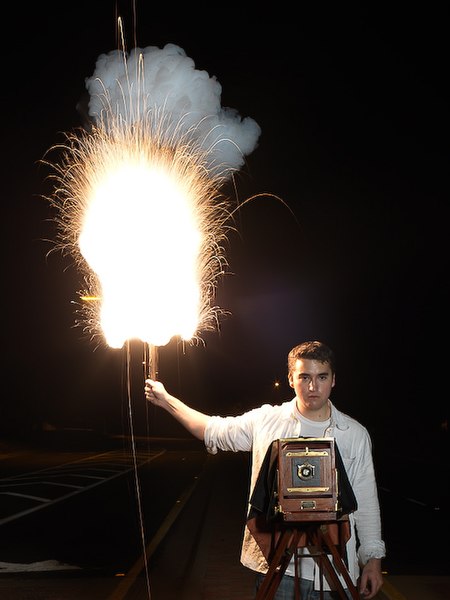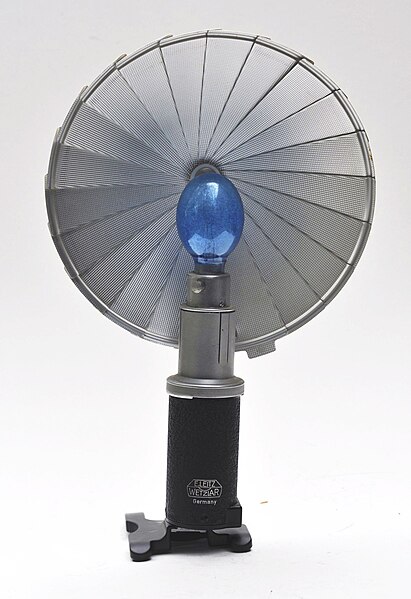In photography, flash synchronization or flash sync is the synchronizing the firing of a photographic flash with the opening of the shutter admitting light to photographic film or electronic image sensor.
An example of improper synch. Either the flash is firing too late or the shutter speed is too fast (shutter moving vertically). Note the different exposure levels.
PC-socket
A flash is a device used in photography that produces a brief burst of light at a color temperature of about 5,500 K to help illuminate a scene. A major purpose of a flash is to illuminate a dark scene. Other uses are capturing quickly moving objects or changing the quality of light. Flash refers either to the flash of light itself or to the electronic flash unit discharging the light. Most current flash units are electronic, having evolved from single-use flashbulbs and flammable powders. Modern cameras often activate flash units automatically.
The high-speed wing action of a hummingbird hawk-moth is frozen by flash. The flash has given the foreground more illumination than the background. See Inverse-square law.
Demonstration of a magnesium flash powder lamp from 1909
Vintage AHA smokeless flash powder lamp kit, Germany
Ernst Leitz Wetzlar flash from 1950s






